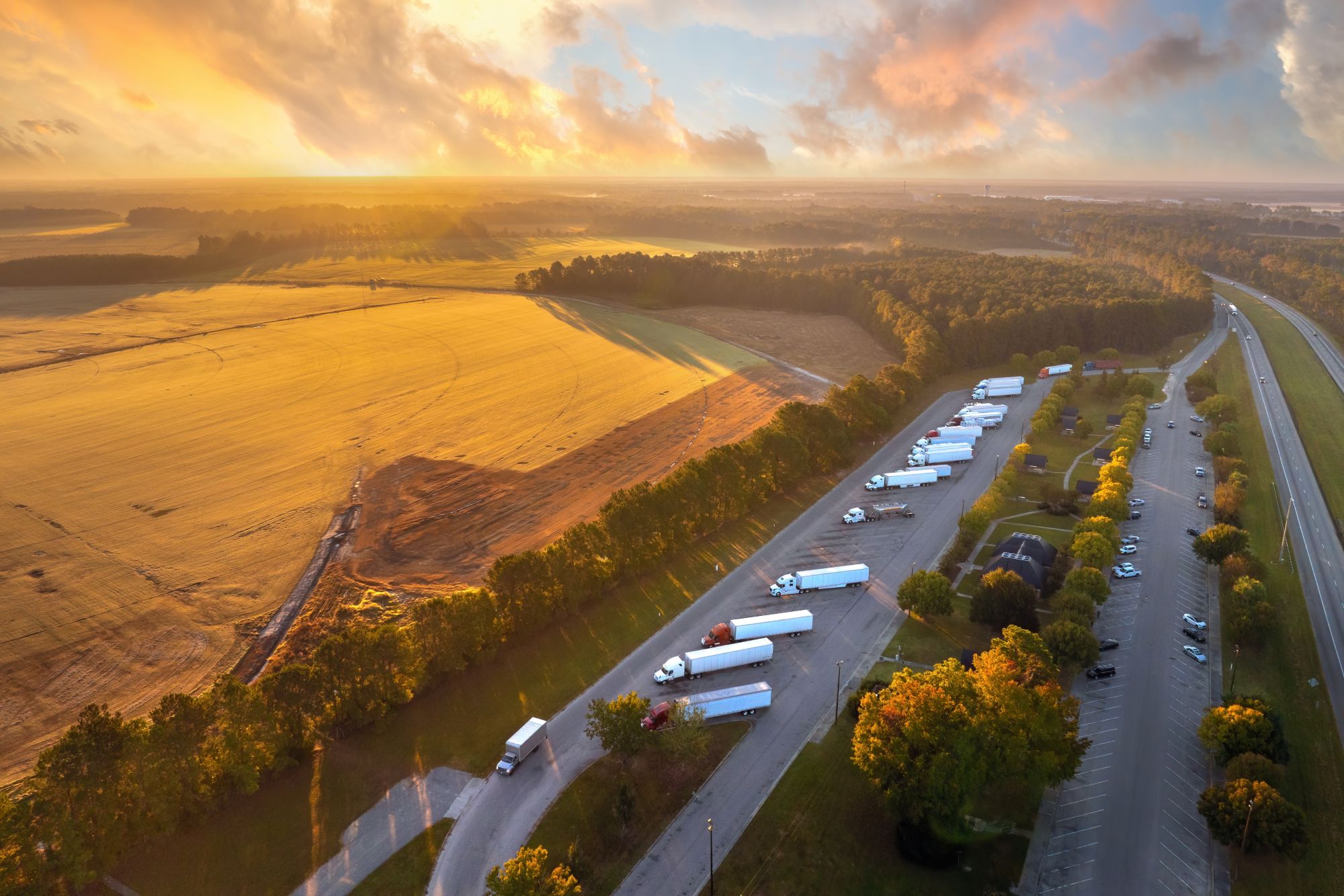
Guest
Sådan bliver du lastbilchauffør
Oprettet: 26.09.2025
•
Opdateret: 26.09.2025
I hele Europa har efterspørgslen efter professionelle lastbilchauffører aldrig været større. I Storbritannien anslår Road Haulage Association, at der vil være behov for 200.000 nye lastbilchauffører i de næste fem år for at holde forsyningskæderne i gang. Og situationen er den samme i det meste af Europa. Ifølge data fra International Road Transport Union var der 426.000 ubesatte chaufførstillinger i hele Europa i 2024.
Men det skaber en mulighed. Som vi tidligere har udforsket, giver transportbranchen udsigt til fast arbejde for skoleelever, der overvejer alternativer til universitetet, og voksne, der ønsker at omskole sig. At blive lastbilchauffør er en vej til sikker indtjening og en struktureret karriere.
Spørgsmålet, mange stiller, er: Hvordan bliver man lastbilchauffør? Svaret afhænger ikke kun af uddannelse og kørekort, men også af at forstå, hvad det vil sige at blive en del af et erhverv, der holder Europas økonomi i gang.
Hvem kan blive lastbilchauffør?
En af de største attraktioner ved en karriere som chauffør er dens tilgængelighed. Du behøver ikke en universitetsgrad eller flere års specialuddannelse for at starte; et almindeligt kørekort til bil (kategori B) er alt, hvad der kræves, før du kan arbejde dig hen imod faglige kvalifikationer.
Minimumsalderen for uddannelse er 18 år i både Storbritannien og hele EU, hvilket betyder, at skoleelever kan gå direkte fra et bilkørekort til en professionel HGV-chaufføruddannelse. Når det er sagt, foretrækker mange firmaer, at internationale chauffører er mindst 21 år på grund af det ekstra ansvar, der følger med langdistancetransport.
Medicinsk egnethed er også vigtig. Alle ansøgere skal bestå en helbredsundersøgelse, før de kan få et HGV-kørekort. I Storbritannien indebærer det en række tests, herunder synstjek, blodtryksmålinger og screening for sygdomme som epilepsi, hjertesygdomme eller søvnapnø.
De europæiske lande anvender de samme medicinske standarder i hele EU, og regelmæssige fornyelser sikrer, at chaufførerne forbliver sunde gennem hele deres karriere.
Hvor meget tjener en lastbilchauffør?
For mange mennesker, der overvejer at blive professionelle chauffører, er det vigtigste spørgsmål: Hvor meget tjener lastbilchauffører?
Svaret varierer afhængigt af sted, erfaring og den type arbejde, der udføres, men i hele Europa tilbyder erhvervet en konkurrencedygtig løn sammenlignet med andre begynderjobs.
● En ny chauffør i Storbritannien vil normalt starte på omkring 27.000 pund om året. De, der går over til langdistancearbejde, især på internationale ruter, kan se deres løn stige til op mod 45.000 pund - nogle gange mere, hvis de kører specialtransporter eller farligt gods. de, der håndterer specialtransporter, farligt gods eller kører på tværs af grænser.
● I [Spanien] (https://www.salaryexpert.com/salary/job/truck-driver/spain) er lønningerne som regel lavere end i Storbritannien, typisk omkring 36.600 euro, selv om store logistikvirksomheder i større byer kan tilbyde mere.
● Polen har oplevet stor efterspørgsel efter chauffører i de seneste år, men lønningerne er stadig beskedne og ligger i gennemsnit på omkring 92.400 PLN (ca. 21.690 euro).
● [Rumænien] (https://www.erieri.com/salary/job/heavy-truck-driver/romania#:~:text=Salary%20Recap,and%20anonymous%20employees%20in%20Romania.) ligger i den lave ende af skalaen, hvor chauffører generelt tjener 80.550 RON (16.000 euro), selv om internationale transportkontrakter kan øge lønnen betydeligt.
Selvfølgelig er lønnen ikke hele historien. Mange virksomheder tilbyder overtidsbetaling, kostpenge eller bonusser for at nå leveringsmålene. Og da efterspørgslen efter chauffører ikke viser tegn på at aftage, giver jobbet også en grad af sikkerhed, som kun få andre karrierer på begynderniveau kan matche.
Hvilket lastbilkørekort skal jeg have?
Før du kan sætte dig bag rattet i en lastbil, skal du have det rigtige kørekort. I Storbritannien betyder det, at du skal gå videre end et almindeligt bilkørekort til det, der officielt kaldes et LGV-kørekort (Large Goods Vehicle) eller HGV-kørekort (Heavy Goods Vehicle). Begreberne bruges ofte i flæng, men begge dækker de samme kategorier af professionel kørsel.
Nogle begynder med et kørekort i kategori C1, som dækker mellemstore køretøjer mellem 3,5 og 7,5 tons - ofte brugt til mindre lastbiler.
De fleste håbefulde lastbilchauffører går dog direkte til kategori C-kørekortet, som også kaldes et klasse 2 HGV-kørekort. Det giver dig mulighed for at køre stive køretøjer på over 7,5 tons. For dem, der ønsker at gå videre til leddelte lastbiler - de større køretøjer, der ofte bruges på langdistance- og internationale ruter - kræves kørekort til kategori CE (klasse 1).
Ved siden af disse kvalifikationer ligger chaufførens certifikat for erhvervskompetence (CPC), som er et lovkrav i både Storbritannien og EU. Dette certifikat omfatter en blanding af indledende træning og periodiske genopfriskninger, der er designet til at holde chaufførerne ajour med sikkerhed, regler og færdigheder i trafikken.
Dette system afspejler den EU-dækkende licensramme. De største forskelle mellem landene ligger i uddannelsesudbyderne, de involverede omkostninger og, nogle steder, tilgængeligheden af testpladser.

Sådan får du dit HGV-kørekort
At få et HGV-kørekort er det første skridt ind i professionel kørsel. I Storbritannien kan du starte processen, når du har et standardkørekort til bil i kategori B. Derefter ansøger du om et midlertidigt lastbilkørekort, som giver dig mulighed for at begynde at træne i store godskøretøjer.
Selve uddannelsen kombinerer teori og praktiske elementer: klasseundervisning i trafiksikkerhed og regler, efterfulgt af overvåget kørsel i tunge køretøjer. Kandidaterne skal også gennemføre moduler til chaufførens erhvervskompetencebevis (CPC), som sikrer, at chaufførerne ikke kun er udstyret til at betjene køretøjerne sikkert, men også til at håndtere de daglige krav i forbindelse med transport.
Hvad koster det at blive lastbilchauffør?
Et af de mest almindelige spørgsmål for alle, der overvejer denne karriere, er, hvor meget en lastbilchaufføruddannelse koster. I Storbritannien varierer priserne afhængigt af udbyder, sted og om du uddanner dig til et kategori C- eller det mere avancerede kategori CE-kørekort. I gennemsnit kan nye chauffører forvente at bruge mellem 2.000 og 3.500 pund på at dække lægetjek, gebyr for midlertidigt kørekort, teoriprøver, praktisk træning, CPC-moduler og den endelige køreprøve. Nogle virksomheder, især større logistikvirksomheder, tilbyder ordninger med tilskud til eller fuld finansiering af uddannelse til gengæld for en arbejdsforpligtelse, hvilket gør vejen mere tilgængelig.
Andre steder i Europa er tallene ikke meget anderledes. I Spanien koster træning generelt mellem 2.000 og 3.000 euro for fuld træning og certificering. I Polen er tallet lavere og ligger i gennemsnit på 1.500-2.500 euro. Rumænien har nogle af de laveste uddannelsesomkostninger i Europa, hvor mange kandidater betaler omkring 1.000 til 1.800 euro for at kvalificere sig, selv om indgangslønningerne har en tendens til at afspejle denne lavere adgangsbarriere.
Hvor lang tid tager det at blive lastbilchauffør?
Hvor lang tid det tager at kvalificere sig som lastbilchauffør, afhænger af, hvor du uddanner dig, hvilken type kørekort du sigter efter, og hvor hurtigt du kan få en prøvedato. I Storbritannien gennemfører de fleste deres uddannelse og består deres prøver inden for to til fire måneder. Nogle intensive kurser komprimerer processen til et par uger, men mange chauffører oplever, at de bedre kan tilegne sig færdighederne ved at sprede undervisningen ud.
I Spanien og Polen er processen den samme, selv om længere ventelister på eksamenspladser kan forlænge tidsplanen. I Polen har den store efterspørgsel efter erhvervschauffører skabt flaskehalse på uddannelsescentrene, hvilket betyder, at nogle kandidater venter flere måneder, før de kan gå op til den praktiske prøve. Rumænien har et af de hurtigste forløb, hvor uddannelse og test ofte er afsluttet inden for otte til tolv uger.
Og læringen stopper ikke, når du har fået dit kørekort. Alle erhvervschauffører skal gennemføre 35 timers CPC-træning hvert femte år for at holde deres færdigheder opdaterede og sikre, at de er klar til de nyeste regler og sikkerhedsstandarder.
Hvor længe må en lastbilchauffør køre?
Når du er kvalificeret, er der strenge grænser for, hvor lang tid du må tilbringe bag rattet. Disse grænser er designet til at beskytte både chauffører og andre trafikanter ved at reducere træthed.
Reglerne er de samme i hele Storbritannien og EU. Chauffører kan tilbringe [maksimalt ni timer bag rattet] (https://www.gov.uk/drivers-hours/eu-rules#:~:text=9%20hours%20in%20a%20day,in%20any%202%20consecutive%20weeks) hver dag, hvilket kan udvides til ti timer to gange om ugen. Den ugentlige grænse er 56 timer, og der må ikke køres mere end 90 timer i løbet af to på hinanden følgende uger.
En chauffør skal også holde en pause på mindst 45 minutter efter 4,5 timers kørsel. De har også ret til daglige og ugentlige hvileperioder for at restituere, før de vender tilbage til arbejdet.
Disse regler overvåges nøje, og køretøjerne er udstyret med fartskrivere, der registrerer timerne og sikrer, at de overholdes. For dem, der arbejder på langdistanceruter, som f.eks. spanske chauffører, der kører på Den Iberiske Halvø, eller polske vognmænd, der transporterer varer på tværs af EU's østlige grænser, former disse grænser arbejdets rytme. De bestemmer, hvornår og hvor chaufførerne stopper, hvilket gør adgang til sikre og trygge hvileområder til en vigtig del af arbejdsdagen.
At komme i gang som lastbilchauffør
At blive lastbilchauffør handler ikke kun om at bestå prøver. Det handler om at træde ind i en rolle, der indebærer et reelt ansvar, men som også giver muligheder på lang sigt. Med det rigtige kørekort, den rigtige uddannelse og viljen til at tage livet på landevejen op, er det en karriere, der kan give både stabilitet og udvikling.
Hos SNAP ved vi, hvordan de rejser ser ud. Derfor arbejder vi sammen med flåder og chauffører i hele Europa for at gøre dem mere sikre, enklere og mere komfortable - fra sikker parkering og bedre velfærdsfaciliteter til smarte digitale værktøjer, der sparer tid og stress. Uanset om du lige er startet, eller du har kørt i årevis, er vi her for at støtte dig hver eneste kilometer.
Download [intruck app] (https://intruckapp.com/download/) i dag for at finde pålidelig parkering, faciliteter og tjenester, uanset hvor din rute fører dig hen.



